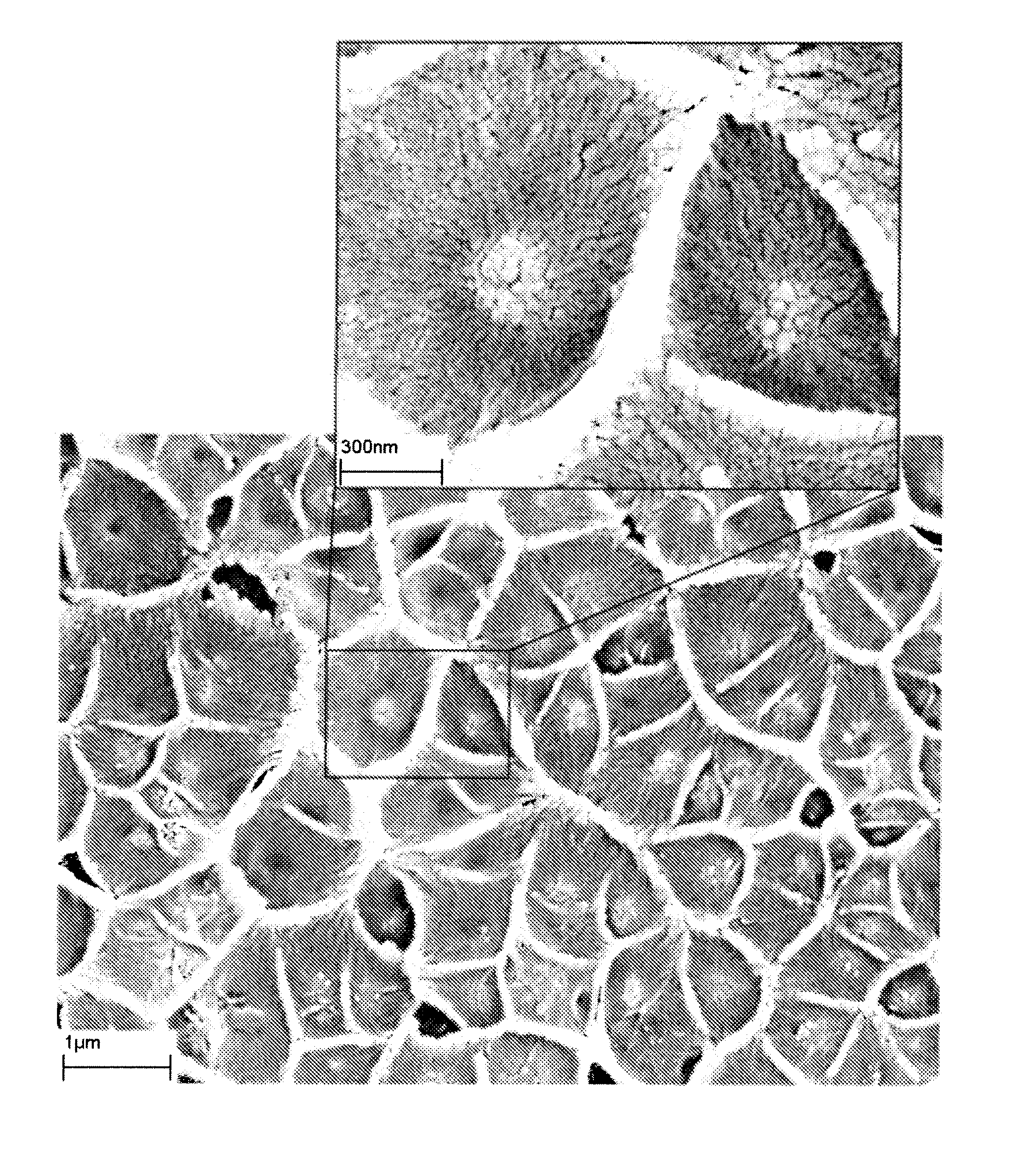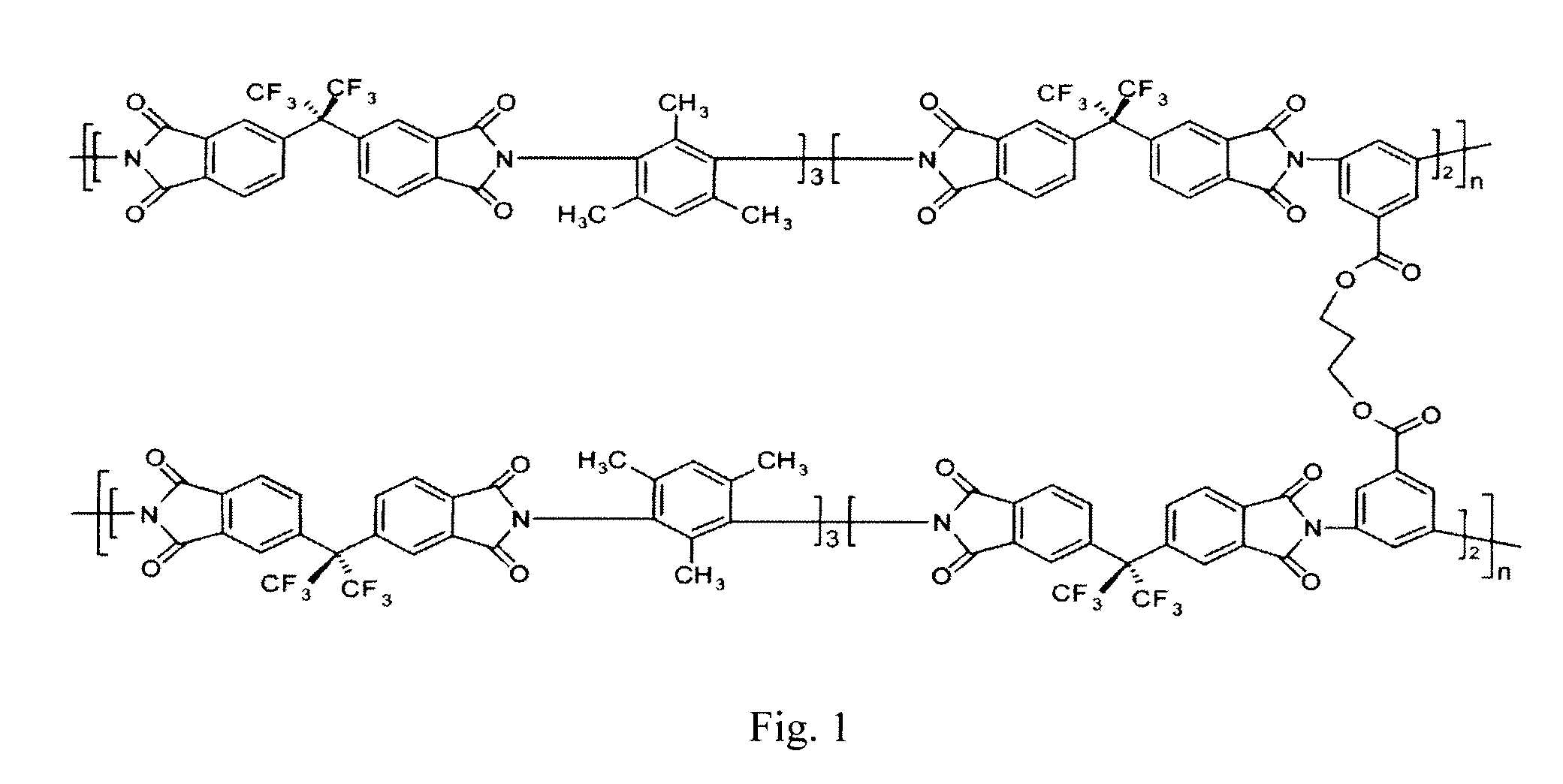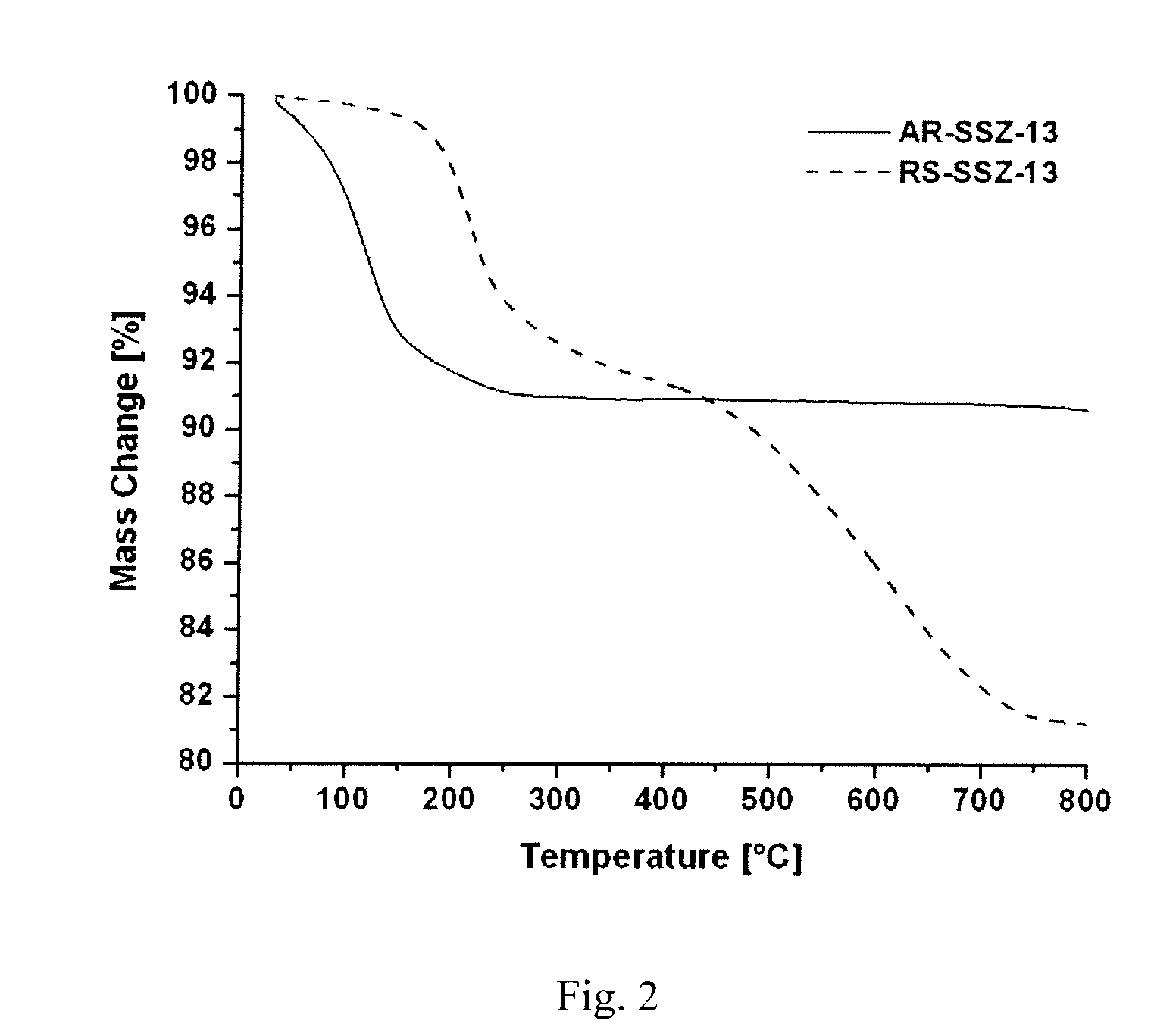Treatment of molecular sieve particles for mixed matrix membranes
a technology of molecular sieve particles and mixed matrix membranes, which is applied in the direction of membranes, separation processes, gaseous fuels, etc., can solve the problems of reducing the separation performance and reducing the separation efficiency of crosslinked polymer membranes. , to achieve the effect of improving the membrane performance and expanding the market for membrane separation
- Summary
- Abstract
- Description
- Claims
- Application Information
AI Technical Summary
Benefits of technology
Problems solved by technology
Method used
Image
Examples
examples
[0025]The present examples are intended to help illustrate the process of the present invention and are not meant to limit the scope of the application.
[0026]A crosslinkable polyimide—6FDA-DAM:DABA (3:2), esterified with 1,3-propanediol—was used in this work. The synthesis and crosslinking mechanism of this polymer has been described in detail in, for example, Hillock, A. M. W. and W. J. Koros, Cross-linkable polyimide membrane for natural gas purification and carbon dioxide plasticization reduction. Macromolecules, 2007. 40(3): p. 583-587 and Omole, I. C., Crosslinked polyimide hollow fiber membranes for aggressive natural gas feed streams, in pH.D. Thesis for School of Chemical and Biomolecular Engineering. 2008, Georgia Institute of Technology: Atlanta, Ga. Commonly referred to as PDMC (PropaneDiol Monoester Crosslinkable), this polymer is synthesized from 4,4′-(hexafluoroisopropylidene)diphthalic anhydride (6FDA); 2,4,6-trimethyl-m-phenylenediamine (DAM); and 3,5-diaminobenzoic ...
PUM
| Property | Measurement | Unit |
|---|---|---|
| molar ratio | aaaaa | aaaaa |
| particle size | aaaaa | aaaaa |
| temperature | aaaaa | aaaaa |
Abstract
Description
Claims
Application Information
 Login to View More
Login to View More - R&D
- Intellectual Property
- Life Sciences
- Materials
- Tech Scout
- Unparalleled Data Quality
- Higher Quality Content
- 60% Fewer Hallucinations
Browse by: Latest US Patents, China's latest patents, Technical Efficacy Thesaurus, Application Domain, Technology Topic, Popular Technical Reports.
© 2025 PatSnap. All rights reserved.Legal|Privacy policy|Modern Slavery Act Transparency Statement|Sitemap|About US| Contact US: help@patsnap.com



